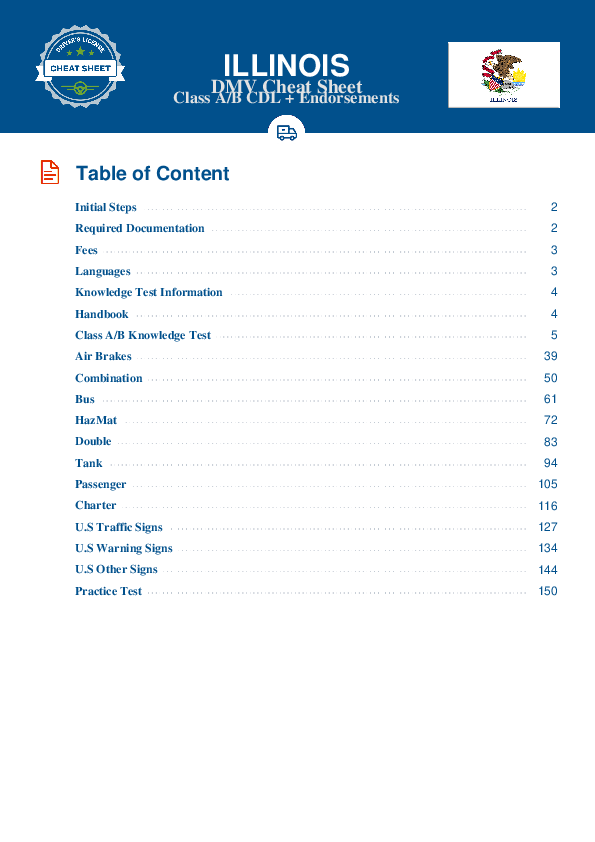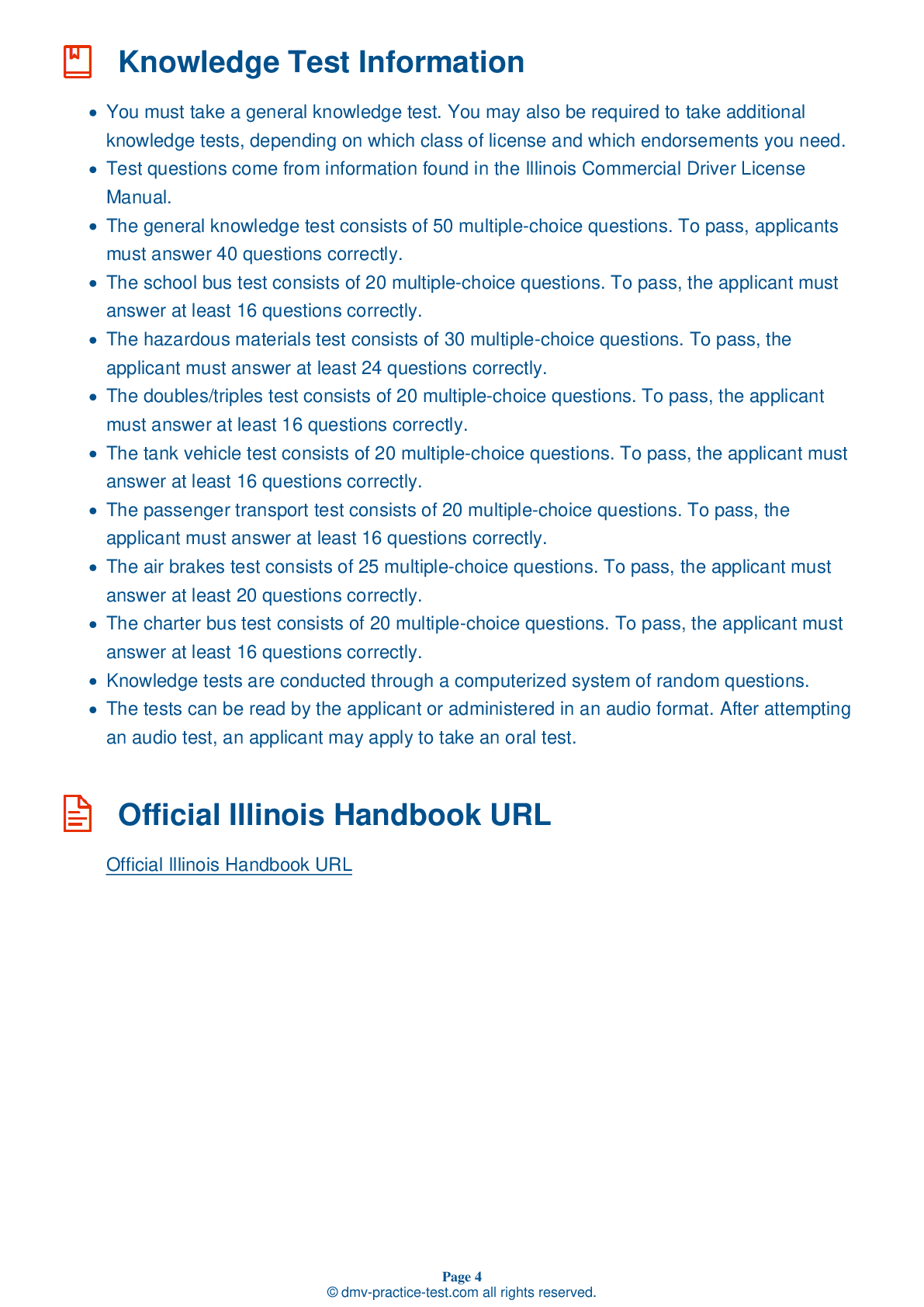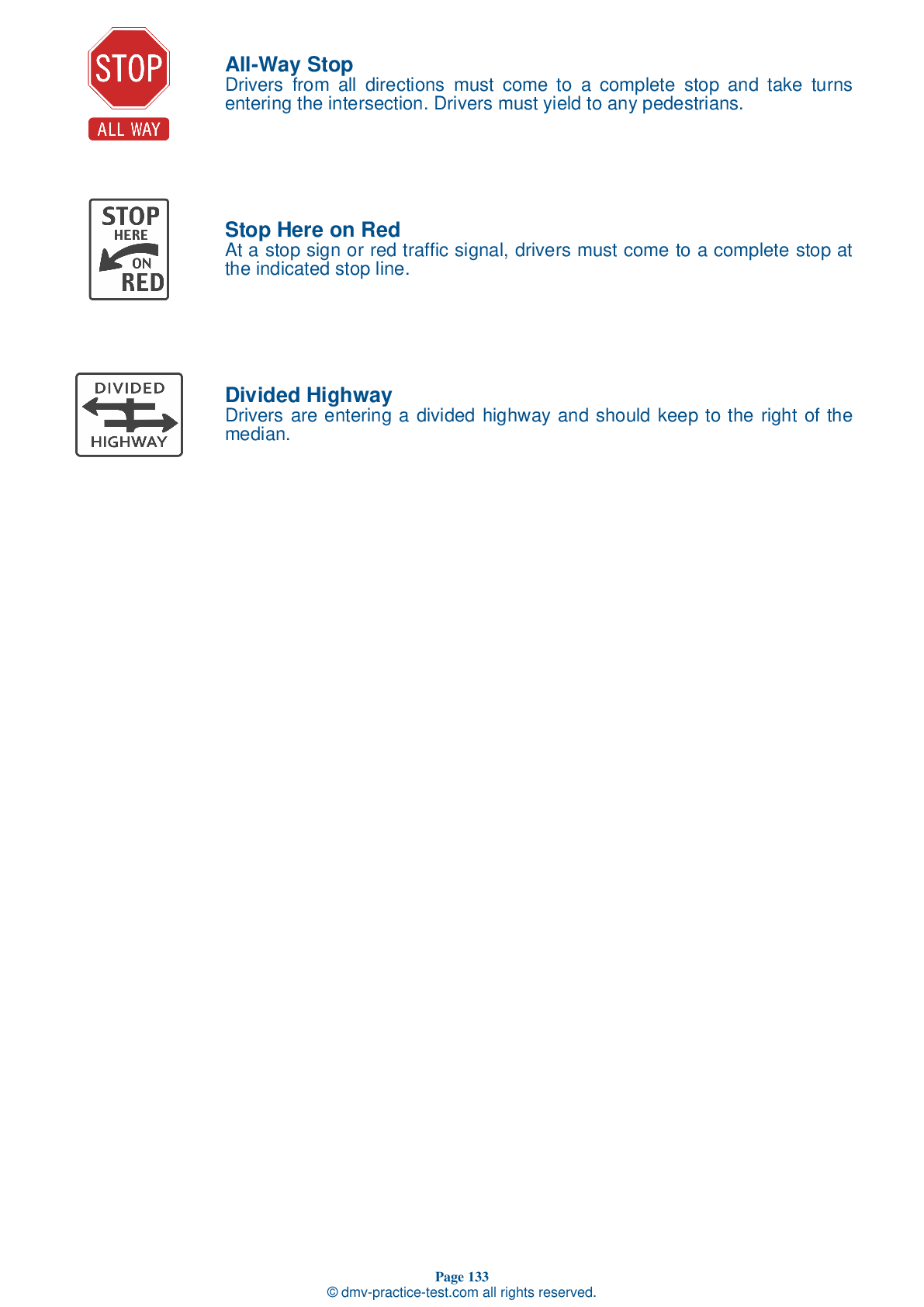Class A Driving Test | Illinois 2025 #1 Page 2 of 7
Train for FREE online with our Illinois class A license test. The official exam test consists of several obligatory parts, with all of them checking your knowledge of different blocks of road rules. If you need to obtain a IL CDL class A permit in 2025, practice as much as possible. Free sample tests published on our website will help you check and improve your knowledge and boost your grades. Please bear in mind that CDL class A requirements may vary from state to state.
8 . During a basic vehicle control skills test, you may be asked to:
Maneuvers that may be included in the basic vehicle control skills test include straight line backing, offset back/right parking, offset back/left parking, driver side parallel parking, conventional parallel parking, and alley docking.
9 . Livestock:
Livestock being transported as cargo can move around and shift their weight in transit, which can result in unsafe handling.
10 . Alcohol is removed from the body:
The liver removes alcohol from the body at a fixed rate that cannot be accelerated through common tricks, such as drinking coffee or taking a cold shower. The only way to sober up after drinking is to give your body the time it requires to process the alcohol out of your system.
11 . Wheel rims that have been welded should:
Wheels and rims with welding repairs are not safe to be used. Replace any damaged wheels and rims.
12 . During a basic vehicle control skills test, what is considered a look?
A driver uses a look when they open their door, leave their seated position, and walk to the back of the vehicle to check its position. During the straight line backing exercise, a driver may not exceed one look. During any other exercise, a driver may not exceed two looks.
13 . How many seconds of following distance per every 10 feet of vehicle should you maintain when traveling more slowly than 40 mph?
When traveling at speeds below 40 mph, you should maintain at least one second of following distance for every 10 feet of your vehicle's length. At higher speeds, add an additional second.
14 . The maximum width for any vehicle is:
In Illinois, a vehicle may be no more than 8 feet, 6 inches in width. There are specific exceptions to this rule for certain farm equipment and buses.
See the exact questions that will be on the 2025 Illinois DMV exam.
99.2% of people who use the cheat sheet pass the FIRST TIME
Lillian MCcranie explains how our CDL study guide was helpful in passing the exam and recommends it to everyone.
Cameron tells us how he purchased the CDL exam, and found it to be a useful tool which helped him pass the exam and find a job.



